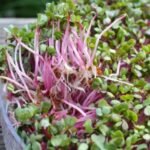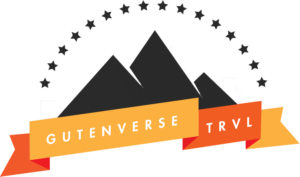Chive sprouts are young, tender shoots of the chive plant (Allium schoenoprasum), a popular herb in the onion family. These sprouts offer a mild, onion-like flavor with a hint of garlic and are commonly used in cooking, garnishing, and salads. Known for their fresh taste and vibrant green color, chive sprouts pack a punch in terms of nutrition and versatility in the kitchen.
Whether you’re a seasoned chef or a beginner, adding chive sprouts to your dishes is an easy and delicious way to boost flavor while reaping numerous health benefits. This guide will explore everything you need to know about chive sprouts, from their nutritional value to how you can grow and use them at home.
Nutritional Benefits of Chive Sprouts
Chive sprouts are more than just a tasty garnish. Packed with essential vitamins, minerals, and antioxidants, they are a powerhouse of nutrition. Here’s a breakdown of the health benefits they offer:
High in Vitamins and Minerals
Chive sprouts are rich in Vitamin K, which supports bone health, and Vitamin C, which boosts the immune system. Additionally, they provide small amounts of Vitamin A, folate, and several B vitamins, which contribute to overall well-being.
Rich in Antioxidants
The antioxidants found in chive sprouts help protect the body from oxidative stress and reduce inflammation. These compounds are also known to reduce the risk of chronic diseases such as heart disease and cancer.
Support Digestion and Gut Health
Chive sprouts are a good source of dietary fiber, which helps promote healthy digestion and supports the growth of beneficial gut bacteria. A healthy gut improves digestion, better nutrient absorption, and enhanced immunity.
Low in Calories
Chive sprouts are low in calories, making them an excellent choice for anyone looking to manage their weight without sacrificing flavor. A tablespoon or two of chive sprouts can add a lot of flavor without increasing your calorie intake.
How to Grow Chive Sprouts at Home
Growing chive sprouts is a simple and rewarding process. Whether you have a garden or just a small indoor space, they are easy to grow in containers or directly in the ground.
Step-by-Step Guide to Growing Chive Sprouts
Select the Right Seeds
Purchase high-quality chive seeds from a reputable source. You can find seeds in most garden centers or online.
Prepare the Soil or Container
Chives thrive in well-drained soil. If growing indoors, choose a shallow container with drainage holes. Outdoors, select a sunny spot with loose, nutrient-rich soil.
Plant the Seeds
Sprinkle the chive seeds on the soil and gently press them in. Cover the seeds with a thin layer of soil, no more than 1/4 inch deep.
Water Regularly
Chive sprouts require consistent moisture to germinate. Keep the soil moist but only soggy once the seeds sprout.
Provide Adequate Sunlight
Chive sprouts need plenty of indirect sunlight. Place your containers on a windowsill or in a bright spot.
Harvesting the Sprouts
Chive sprouts will typically begin sprouting within 7-14 days, and you can start harvesting them once they are around 4-6 inches tall. Use scissors to snip off the tops, allowing the plant to regrow for future harvests.
Types of Chive Sprouts
Chive sprouts come in different types, primarily categorized based on the variety of chive plants they come from. While most chive sprouts are similar in flavor and appearance, different varieties may offer subtle differences in taste, texture, and growth habits. Here are some common types of chive sprouts:
Common Chives (Allium schoenoprasum)
The most widely recognized and cultivated chive variety, Common Chives, is known for its mild, onion-like flavor with a hint of garlic. These chive sprouts are tender, green, and vibrant, perfect for garnishing baked potatoes, scrambled eggs, and salads.
-
Flavor Profile: Mild onion flavor with a subtle garlicky taste.
-
Uses: Ideal for fresh culinary applications, such as in dips, sauces, and salads.
-
Growth: Proliferates can be harvested in as little as 3-4 weeks from planting.
Garlic Chives (Allium tuberosum)
Garlic chives are another popular type of chive. Their sprouts have a more pronounced garlic flavor compared to the mild onion taste of common chives. Garlic chive sprouts are slightly broader and thicker than common chives and are often used in Asian cuisine.
-
Flavor Profile: Stronger, garlicky flavor with a subtle onion note.
-
Uses: They are often used in stir-fries, dumplings, and Asian sauces. They can also be used in salads or soups.
-
Growth: Garlic chives have a slower growth rate than common chives but are equally easy to grow.
Golden Chives
A lesser-known variety, Golden Chives are a unique cultivar with a golden-yellow tint to their stems and leaves. These chives add an aesthetic appeal to dishes with their vibrant color, and their flavor is similar to common chives but with a slightly milder taste.
-
Flavor Profile: Mild and delicate onion flavor.
-
Uses: It is ideal for garnishing and adding a splash of color to dishes like soups, salads, and dips.
-
Growth: Golden chives can be grown just like common chives and are harvested at a similar rate.
Purple Chives (Chives ‘Forescate’)
The Purple chive variety is an ornamental chive with deep purple flowers. While the leaves are similar to common chives, the flowers can also be eaten, offering an edible, colorful garnish for various dishes. The sprouts themselves have the same mild onion flavor as standard chives.
-
Flavor Profile: Mild onion flavor, with the flowers offering a slightly floral, sweet note.
-
Uses: Both the leaves and flowers are used in culinary applications. The flowers are great as a garnish, and the leaves work well in salads and sauces.
-
Growth: Grows well in containers or garden beds, offering beauty and flavor.
Giant Chives (Allium schoenoprasum ‘Giganteum’)
The Giant chive variety produces larger, thicker leaves and more robust chive sprouts than regular chive varieties. These chives are perfect for those who prefer a more intense flavor or need more substantial leaves for specific recipes, like stuffing or grilling.
-
Flavor Profile: Stronger, more intense onion flavor.
-
Uses: Can be used in heavier dishes, such as meat wraps, grilled fish, or hearty salads.
-
Growth: It takes a little longer but produces abundant, large leaves.
Bunching Chives (Allium fistulosum)
Also known as Welsh or Japanese bunching onions, bunching chives produce multiple, smaller sprouts from each seed. They are often used in both Western and Asian cuisine and have a mild onion flavor similar to common chives but with a slightly more distinct bite.
-
Flavor Profile: Milder than garlic chives but with a more pronounced flavor than regular chives.
-
Uses: Great for stir-fries, as a garnish, or in soups and broths.
-
Growth: Known for producing multiple shoots from the same base, making them an efficient variety to grow.
Using Chive Sprouts in Cooking
Chive sprouts are incredibly versatile and can be used in various dishes. Here are some ideas for incorporating them into your meals:
In Salads
Chive sprouts add a light, fresh onion flavor to salads. Sprinkle them on top of leafy greens, mixed vegetables, or potato salad for a pop of color and flavor.
As a Garnish
Chive sprouts are a delicious garnish for soups, baked potatoes, scrambled eggs, and other savory dishes. Their vibrant green color and mild flavor elevate any dish instantly.
In Sauces and Dressings
Chive sprouts are a great addition to homemade salad dressings, dips, and sauces. Blend them into a creamy dip or mix them into a vinaigrette for added freshness.
In Sandwiches and Wraps
Chive sprouts add a burst of flavor to sandwiches or wraps. They pair wonderfully with cheese, eggs, and avocado.
In Smoothies
For a savory twist, blend chive sprouts into your smoothie. They work well with other greens like spinach or kale and can add an oniony touch to your drink.
Culinary Pairings with Chive Sprouts
Chive sprouts have a mild yet distinctive flavor that can complement many dishes. Some excellent food pairings include:
-
Eggs: Chive sprouts and eggs go hand-in-hand, whether in scrambled eggs, omelets, or quiches.
-
Cheese: Soft cheeses like goat cheese or cream cheese pair beautifully with the delicate onion flavor of chive sprouts.
-
Potatoes: Whether in mashed potatoes or as a topping for baked potatoes, chive sprouts provide a subtle, fresh flavor.
-
Seafood: Chive sprouts complement the delicate taste of fish and shellfish. Add them to salmon or shrimp dishes for an extra burst of freshness.
-
Grilled Meats: Chive sprouts pair nicely with grilled meats like chicken or steak. Their mild onion flavor works as an outstanding balance to rich, savory meats.
Storing and Preserving Chive Sprouts
Chive sprouts are best when used fresh, but if you need to store them, here are some tips:
Refrigeration
Keep chive sprouts in a damp paper towel inside an airtight container or a ziplock bag. This will help them stay fresh in the refrigerator for up to 7 days.
Freezing
You can freeze chive sprouts, but it may alter their texture. To freeze, chop the sprouts into small pieces, spread them on a baking sheet to freeze individually, and then transfer them to a freezer bag. Use within 3-4 months.
Chive Sprouts in Traditional Medicine
In traditional medicine, chives have been used for their potential health benefits. Known for their antibacterial and anti-inflammatory properties, chives have been used in herbal remedies to treat various ailments, including digestive issues, and to boost immunity. While more research is needed to validate these claims, chive sprouts are still beneficial to a balanced diet.
FAQ
Can you eat chive sprouts raw?
Yes! Chive sprouts are typically eaten raw and are great in salads, sandwiches, and as a garnish. Their mild flavor is perfect for fresh dishes.
How long do chive sprouts take to grow?
Chive sprouts can begin to sprout within 7-14 days of planting. Once sprouted, they will reach harvestable size (4-6 inches) within 3-4 weeks.
How can I store chive sprouts?
Chive sprouts should be stored in a damp paper towel inside a ziplock bag or airtight container in the refrigerator. They typically stay fresh for about a week.
What is the difference between chive sprouts and chive greens?
Chive sprouts are the young, tender shoots of the chive plant, while chive greens are the fully grown leaves. The sprouts are milder in flavor and more delicate in texture than the mature greens.
Are chive sprouts good for you?
Yes, chive sprouts are low in calories and packed with vitamins, minerals, and antioxidants. They can help support immune function, digestion, and overall health.
Can chive sprouts be grown indoors?
Yes! Chive sprouts grow well indoors, provided they have access to indirect sunlight. They are perfect for small spaces, such as windowsills.














